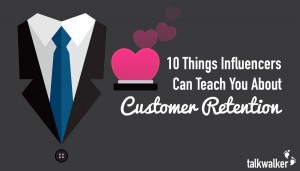— August 14, 2017

Alexas_Fotos / Pixabay
We often talk about organizational change like inertia. We assume that the plans we put into motion will continue in motion unless they’re otherwise affected by some outside force.
But the truth is, organizational change is more akin to entropy. Even without the influence of outside forces, our processes tend to move toward disorder unless they’re continually and actively managed.
Change is a constant, unrelenting force that we as leaders must navigate every day. So how do we make sure we’re positioning ourselves and our teams to operate in such conditions?
This is precisely the question I recently posed to Andy MacMillan, Michelle Huff, and Matt Zelen, the leadership team at Act-On Software, a leading provider of marketing automation software for rapidly growing companies.
While marketing automation itself may have little to do with organizational change, what’s so fascinating about this trio is they’ve worked together for over twelve years at four different companies.
As a leadership team, Andy (CEO), Michelle (CMO), and Matt (Chief Customer Officer) know a thing or two about managing constant change. And I wanted to learn how they’ve remained successful over the course of their impressive partnership.
The Challenge Of Constant Change
“Change is often the most necessary and most challenging part of being a leader in a rapidly growing company,” says Matt. “As an individual, team, and organization, you have to be able to quickly assess and appropriately adapt to new challenges.” This can be really difficult when your team is growing and changing, however, and it’s important to understand how even the smallest change affects your team.
“There have been many times in my career when I’ve underestimated the impact of change,” Michelle shares. “I’ve forgotten just how important it is to win hearts and minds and do the work of convincing people around changes big and small. You must have buy-in. You’ve got to roll up your sleeves and have the hard conversations beforehand. Getting support after the fact is an uphill battle.”
“There’s also an interesting dynamic of individuals and sometimes whole teams being at different points of acceptance and excitement around any change,” says Andy. This can add significant tension as employees all try to adjust and align around a new direction.
Act-On’s leadership team strives to recognize relationships across the organization at all levels, and understand how those relationships play a role in driving and thriving during times of significant change.
They call this ‘organizational empathy,’ and it’s become the linchpin to their success over the last twelve years.
The Three Elements Of Organizational Empathy
Andy, Michelle, and Matt identified three foundational elements of organizational empathy.
Transparency
I’ve always believed it’s extremely difficult to keep secrets in an organization. Rather than getting caught up in a cycle of cutting people off from information, think about flipping that line of thinking on its head. Keep people informed and in share the current realities of the business so they can actively participate in helping drive the performance you’re looking for.
Communication
Honest, open communication from leadership is important but in this context, communication goes well beyond that. Two-way dialogue where stakeholders feel safe to voice their opinions, perceptions, questions, and concerns with leaders who are mature enough to listen and openly accept and value feedback is critical.
Trust
“It can’t just be transparency, communication, and trust at the executive level; it needs to be company-wide,” says Michelle. “Talking through the challenges that other departments are going through and what they are trying to accomplish is important. It helps set the context and help people understand how we’re all moving forward together.”
“It’s much easier said than done,” adds Matt. “One of the ways we have worked to accomplish this is to engage cross-functional groups often, in both tactical and strategic discussions. Bringing key contributors and leaders from other departments into closed-door meetings not only fosters teamwork but also visibility into barriers to success and a genuinely collaborative approach to problem-solving. Often some of the best ideas come from other departments that have a different perspective on a given challenge.”
“Having a team that already knows how to communicate with each other and inherently trusts each other is a huge advantage when undergoing massive change quickly,” says Andy. “I would also add that in any situation you will not know all of the challenges and obstacles that will be in your path. Competition; external market forces; lots of things will cause challenges. But what you can control is who you want to be part of your team while tackling those challenges.”
How Can You Build Organizational Empathy Into Your Culture?
1. Lead with intention. Be deliberate in your efforts to shape the culture of your organization and don’t assume that it will form naturally based on having a good group of people in place. As a leader, every interaction is an opportunity to create or reinforce a powerful, positive experience for your team – to remind people of what’s most important to the success of the collective.
2. Take a grassroots approach. “It’s important to ensure the culture is as grassroots as it is top-down,” says Andy. Leaders can set a tone and provide direction, but they cannot simply transplant a formula that worked in their previous experiences. Take the time to listen, observe, and understand how people operate in the organization before attempting to change things.
3. Practice positive intent. Driving an organization through aggressive growth can naturally lead to stress and frustrations across teams. “We’ve stressed the importance of empathy and assuming positive intent going into every situation,” says Matt, “which has helped cultivate a culture of understanding and cohesiveness as we press forward together.”
4. You can’t do it all. As a leader, you may be tempted to place all the responsibility on your shoulders, but you can’t, and shouldn’t, attempt to go it alone. Find qualified people who balance the strengths and skill sets with others on your team. “It frees you up to focus on other parts of the business,” says Michelle, “because you can’t do it all!”
You may not have a twelve-year history with your teammates like the Act-On team but we can all certainly learn from their success. In the face of constant change, these basic principles of transparency, communication, and trust can help keep your organization moving in the right direction.
Business & Finance Articles on Business 2 Community
(90)







